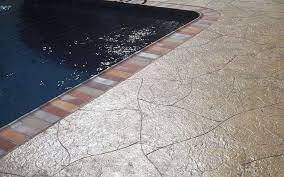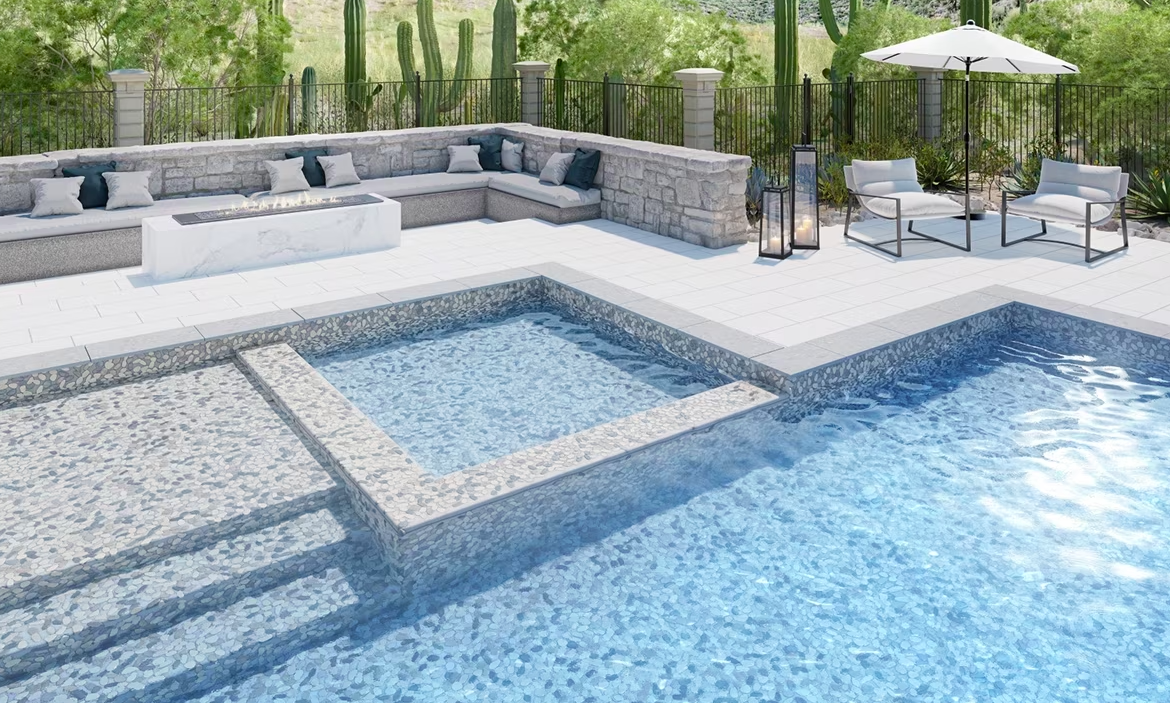A well-maintained pool deck can significantly enhance your outdoor space’s overall aesthetics and functionality. However, over time, pool decks can become worn, cracked, and faded due to exposure to harsh weather conditions, heavy foot traffic, and the constant presence of water. Fortunately, there is a cost-effective solution to restore the beauty and functionality of your pool deck: concrete pool deck resurfacing.
This article will explore the numerous benefits of resurfacing your pool deck with concrete, including its ability to revitalize the area, improve safety, and enhance durability. Additionally, we will delve into the resurfacing process, which involves repairing cracks, applying a new concrete layer, and adding a protective sealant. By investing in concrete pool deck resurfacing, you can transform your pool deck into a fresh and inviting space that will provide years of outdoor enjoyment for you and your loved ones.
Restoring the Beauty of Your Pool Area
One of the primary benefits of concrete pool deck resurfacing is the ability to restore the beauty of your pool area. Over time, exposure to the elements and regular use can cause the surface of your pool deck to become discolored, faded, and worn. By resurfacing the deck, you can breathe new life into the space and create an attractive and inviting area for relaxation and entertainment.
Concrete resurfacing allows you to choose from a variety of colors, textures, and finishes, enabling you to customize the look of your pool deck to complement your personal style and the overall design of your outdoor space. Whether you prefer a modern, sleek appearance or a more natural and rustic feel, concrete resurfacing can help you achieve the desired aesthetic.
Enhancing Safety
Another significant advantage of concrete pool deck resurfacing is improving safety around your pool area. Cracks and uneven surfaces on the deck can pose a tripping hazard for swimmers and guests, increasing the risk of accidents and injuries.
These imperfections can be repaired by resurfacing the pool deck, creating a smooth and even surface that minimizes the potential for slips and falls. Moreover, concrete resurfacing allows for applying slip-resistant coatings, further enhancing the safety of the pool deck. These coatings provide additional traction, even when the surface is wet, ensuring a secure and worry-free environment for everyone using the pool.
Increasing Durability and Longevity
Concrete pool deck resurfacing also significantly improves the durability and longevity of your pool deck. The process involves applying a new layer of concrete over the existing surface, effectively covering up any cracks, stains, or other imperfections. This new layer adds strength and resilience to the deck, making it more resistant to the elements, heavy foot traffic, and constant exposure to water and pool chemicals.
Furthermore, a protective sealant can be applied to the resurfaced pool deck, which helps to prevent damage from UV rays, water penetration, and stains. By investing in concrete resurfacing, you can significantly extend the lifespan of your pool deck, saving you both time and money on future repairs or replacements.
Cost-Effective Solution
Compared to completely replacing your pool deck, concrete resurfacing offers a cost-effective solution for rejuvenating your outdoor space. Replacing an entire pool deck can be a time-consuming and expensive process, involving the demolition of the existing deck and the installation of a new one.
On the other hand, concrete resurfacing allows you to restore the appearance and functionality of your pool deck at a fraction of the cost. You can achieve remarkable results without breaking the bank by choosing to resurface. Additionally, the durability and longevity of the resurfaced deck mean that you won’t have to worry about frequent repairs or replacements in the future, further saving you money in the long run.
The Resurfacing Process
Concrete pool deck resurfacing involves a systematic process to ensure a successful transformation of your pool deck. The first step is to assess the condition of the existing deck and address any underlying issues, such as cracks or structural damage. These imperfections are repaired, creating a solid and stable base for the new concrete layer.
Next, a thin layer of concrete is applied to the surface, either through a spray-on method or by hand troweling. This layer is meticulously smoothed and leveled to create a seamless and attractive surface. Finally, a protective sealant is applied to the resurfaced deck, enhancing durability and resistance to the elements.
If your pool deck shows signs of wear and tear, concrete pool deck resurfacing offers an excellent solution to revitalize your outdoor space. Concrete resurfacing is a popular choice among homeowners due to its ability to restore the beauty of the pool area, enhance safety, improve durability, and provide a cost-effective alternative to replacement. By investing in this transformative process, you can create a fresh and inviting pool deck that will stand the test of time, allowing you to enjoy years of outdoor enjoyment with family and friends. So, why wait? Take the first step towards revitalizing your pool deck today!
Key Takeaways:
- Concrete pool deck resurfacing is a cost-effective solution to restore the beauty and functionality of your pool deck.
- Resurfacing your pool deck can revitalize the area, creating an attractive and inviting space for relaxation and entertainment.
- Concrete resurfacing improves safety by repairing cracks and providing a smooth, slip-resistant surface.
- Resurfacing enhances the durability and longevity of your pool deck, protecting it from the elements and heavy foot traffic.
- Concrete resurfacing offers a more affordable option than replacing the entire pool deck.
- The resurfacing process involves repairing cracks, applying a new concrete layer, and adding a protective sealant.
- Investing in concrete pool deck, resurfacing can provide years of outdoor enjoyment and save money on future repairs or replacements.





